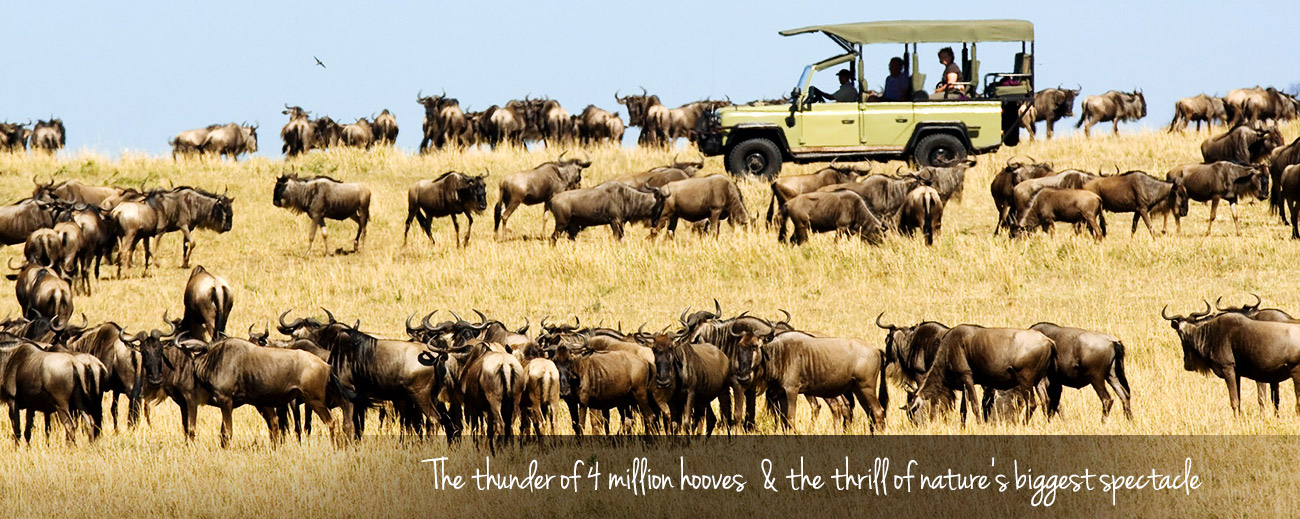WHERE TO GO FOR THE WILDEBEEST MIGRATION…
The question of where to go for the wildebeest migration is an important one as, although the ecosystem is a single entity, the migration takes place in two different conservation areas in two different countries – Kenya’s Masai Mara National Reserve and Tanzania’s Serengeti National Park.
Kenya: Masai Mara National Reserve
By far the smaller of the two conservation areas, the 1510 km² Masai Mara is the northern extension of the Serengeti plains. Located in southern Kenya with its southern-most boundary doubling as the international border with Tanzania, it’s where the wildebeest herds congregate between July and late October/early November after spending much of the year on the move in the Serengeti.
Most famous for the dramatic river crossings of July and August, the Masai Mara is a popular destination during the migration and visitor numbers are high. An alternative is to stay in one of the Masai Mara’s adjoining private conservancies. Besides the exclusivity of sole-use game drive areas, you will also enjoy night drives and bush walks (unavailable in the Masai Mara) as well as game drives to the migration hot spots in the main reserve.
Read more about a Masai Mara safari.
Tanzania: Serengeti National Park
The Serengeti’s late October/early November rains trigger the wildebeest herds into moving south and out of the Masai Mara and into the Serengeti. Located in northern Tanzania and part of the famous ‘Northern Safari Circuit’, Tanzania’s flagship park is an impressive 14 763 km² and offers plenty of room to follow the migrating herds around.
The Serengeti’s south-central Seronera Valley and Southern Plains are where to go for the wildebeest migration if it’s the massed birthing of wildebeest calves that you want to see. From November to March, around 8 000 calves a day are born which means excellent opportunities for predators and virtually guaranteed action.
The focus then shifts away from the southern and central Serengeti. From April until June or July, the herds gather and migrate in long, massed columns to reach the western and northern Serengeti before they return to the Masai Mara in July and August via the perilous river crossings.
There’s plenty of well-sited accommodation within the Serengeti National Park but for exclusivity and activities that are not permitted in the main park such as night drives, we recommend staying in one of the Serengeti’s private conservancies, particularly during the popular June – August period – the private Grumeti Reserves are particularly good.
Read more about a Serengeti safari.


